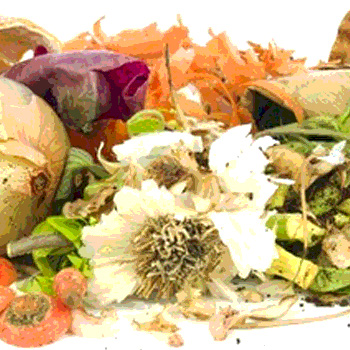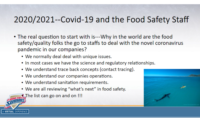In September, Acting Deputy Administrator Stan Meiburg of the Environmental Protection Agency (EPA) and Secretary Tom Vilsack of the U.S. Department of Agriculture announced a national goal to cut America’s food loss and waste in half by the year 2030. Following the announcement, EPA focused on creating opportunities for key stakeholders to tackle America’s wasted food problem.
From November 16–18, 2015, leaders from industry, nonprofits, trade associations, academia, charities and local, state, tribal and federal governments gathered to address the issue of wasted food and the 2030 goal with a spirit of conviction, commitment and innovation. I kicked off the 2015 Food Recovery Summit in Charleston, South Carolina, by challenging the 250 attendees to identify necessary changes within the food system needed to reach our national goal.
The Problem of Wasted Food
In 2013 alone, more than 37 million tons of wasted food was generated, with only five percent diverted from landfills and incinerators. And the amount we throw away is a growing problem. EPA estimates that more food reaches landfills and incinerators than any other single material in our everyday trash, constituting 21 percent of discarded municipal solid waste.
Wasted food is an economic issue: It is estimated that at the retail and consumer levels in the United States, food loss and waste totals $161 billion.
Wasted food is a social problem: In 2013, one in six Americans did not get enough food at some point during the year to live active, healthy lifestyles. Wholesome, nutritious food should feed people, not landfills.
Wasted food is an environmental problem: Food is the largest stream of materials in American trash. Once wasted food reaches landfills, it produces methane, a powerful greenhouse gas that contributes to climate change.
The 2015 Food Recovery Summit
I was proud to join key stakeholders at the 2015 Food Recovery Summit for three days of in-depth discussion about how to address this problem and who is willing to take action. Panel discussions at the Summit offered opportunities to share inspiring success stories and innovative best practices, as well as to identify barriers and challenges. Topics covered included reducing wasted food in all sectors (e.g., government, consumer, education and business) and grassroots and community-based initiatives in food recovery, all done with food safety in mind.
The lessons that I took away from these dialogues helped more fully shape my understanding of the EPA’s future role in leading the fight against excess wasted food in America. Government agencies can help by quantifying national food loss and waste so that people can better understand and mitigate their contributions. I also heard a need to ensure safe donation of excess food and to clarify the laws and liability protections for those that make donations in good faith.
One path to success is local communities working among businesses, charities, the faith community and local/state governments to identify opportunities to first prevent wasted food, and in cases where that is not possible, recover it safely. Regardless of our position in the food system, we all agreed that focus should be on source reduction to avoid waste before it is produced. This approach also makes good business sense. Reducing waste at the source by taking advantage of system efficiencies will improve an organization’s bottom line. Reducing procurement costs up front and taking a close look at customer needs to reduce oversupply can save money.
Additionally, there is a real need for everyone—private and public sector—to better communicate the costs and impacts of wasted food along with the social, economic and environmental benefits we can obtain by managing our food more sustainably and safely.
One of the most profound ideas we discussed was the realization that without a dramatic shift away from business-as-usual and without new, groundbreaking approaches, reducing wasted food by 50 percent in the next 15 years will not happen. We agreed that best practices must be developed and scaled. Historic principles and paradigms must be reconsidered. And, all of us, including EPA, must take the challenge seriously and work to optimize our role.
That is why, following up on the results of the Summit, in the spring of 2016, we will present a new plan of action to serve as a roadmap for tackling wasted food in America. We will also look to leaders in the private sector to take on serious commitments to set a new bar of food conservation and system efficiency. And finally, we will work with our fellow federal agencies to ensure that the U.S. government is leading by example so that we, as a nation, cut food loss and waste in half by the year 2030. I hope that all will join me in this effort.
Mathy Stanislaus is EPA’s assistant administrator for the Office of Solid Waste & Emergency Response.
The 2015 Food Recovery Summit: EPA’s Role in Reducing Wasted Food

Looking for a reprint of this article?
From high-res PDFs to custom plaques, order your copy today!








